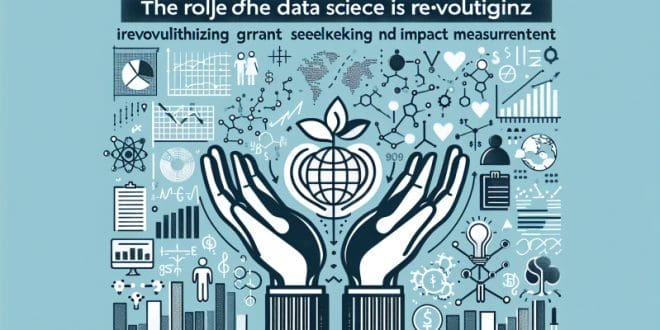In the pursuit of social impact, the non-profit sector is experiencing a transformative shift, propelled by the winds of data science. The integration of analytics and sophisticated data modeling into the fabric of grant-seeking and impact assessment practices is forging new pathways for organizations committed to the greater good. This seismic change is not only enhancing the precision of philanthropy but also redefining the landscape of competitiveness in securing funds.
As we delve into the intricacies of this topic, we must first acknowledge that the realm of data science is not an agnostic field of study. It is, at its core, a powerful toolkit for deciphering complex patterns, predicting outcomes, and infusing evidence-based decision-making into an organization’s strategic blueprint. These capabilities are particularly invaluable to non-profit professionals as they navigate the multifaceted grant ecosystem.
Non-profits can harness the prowess of data science in several facets of their operations:
– Prospect Research**: Through predictive analytics, non-profits can identify potential funders with a higher likelihood of support, based on historical giving patterns, philanthropic interests, and alignment with the organization’s cause.
– Grant Application Customization**: By analyzing the success elements of past applications, organizations can tailor their proposals to resonate more profoundly with grant-makers’ priorities, increasing the chances of funding.
– Outcome Tracking and Reporting**: Non-profits can employ data visualization and statistical models to robustly demonstrate the impact of their programs, satisfying the growing demand from donors for transparency and accountability.
The benefits of a data-driven approach in the non-profit sector are manifold. Enhanced efficiency, the potential for uncovering new insights, and the ability to substantiate the impact are just the tip of the iceberg. Organizations like the Robin Hood Foundation have exemplified this by using data science to optimize the allocation of resources to fight poverty in New York City, thereby maximizing social impact per dollar spent.
However, embarking on the data science journey is not without its challenges. One primary hurdle is the need for technical expertise, which may be scarce or expensive for small and medium non-profits. Additionally, the data itself—often a mix of structured and unstructured formats—can be overwhelming to collect, standardize, and analyze.
To overcome these barriers, non-profits can consider strategic partnerships with academic institutions, harness open-source software, or seek pro bono data science services from corporate volunteers. Furthermore, investing in capacity building through targeted training can empower staff to adopt a data-informed mindset.
For those with limited resources, the key is to start small. Begin by setting clear, measurable goals, collecting relevant data, and using simple analytical tools to glean insights. Over time, as the organization becomes more comfortable with the basics, more complex data science applications can be explored.
In conclusion, the lighthouse of data science beckons non-profit organizations to steer their grant-seeking and impact measurement strategies towards more informed shores. In embracing this call, non-profits not only stand to enhance their effectiveness and showcase their accountability but also secure a firm standing in the competitive landscape of grant acquisition.
As stewards of societal change, it is incumbent upon non-profit professionals to not only keep pace with this digital revolution but to actively engage with it, ensuring that the noble mission of philanthropy continues to thrive in the era of data-driven enlightenment.
 Grants Club Community
Grants Club Community







